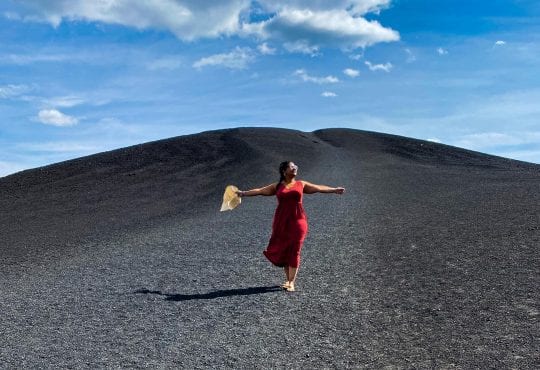Idaho is known as the Gem State and Twin Falls is certainly a hidden gem in this state. There’s so much more to Idaho than potatoes. You’ve probably heard of Coeur d’Alene or Boise but many have not heard of this sweet city in southern Idaho. This area of the state has so much to offer so let’s dive in.
Contents
Perrine Bridge
The Perrine Bridge is a 4 lane truss arch that carries US Highway 93 over the Snake River. You’ll get great views of the Snake River and of the bridge by using one of the 4 parking areas built on each corner of the bridge. The views are fabulous and you can see why Evel Knievel wanted to jump this canyon. You can still spot the ramp in the distance. The bridge is named for I. B. Perrine who is largely credited for founding the Twin Falls area. You will find a statue of Perrine just outside the visitors center on the south end of the bridge.
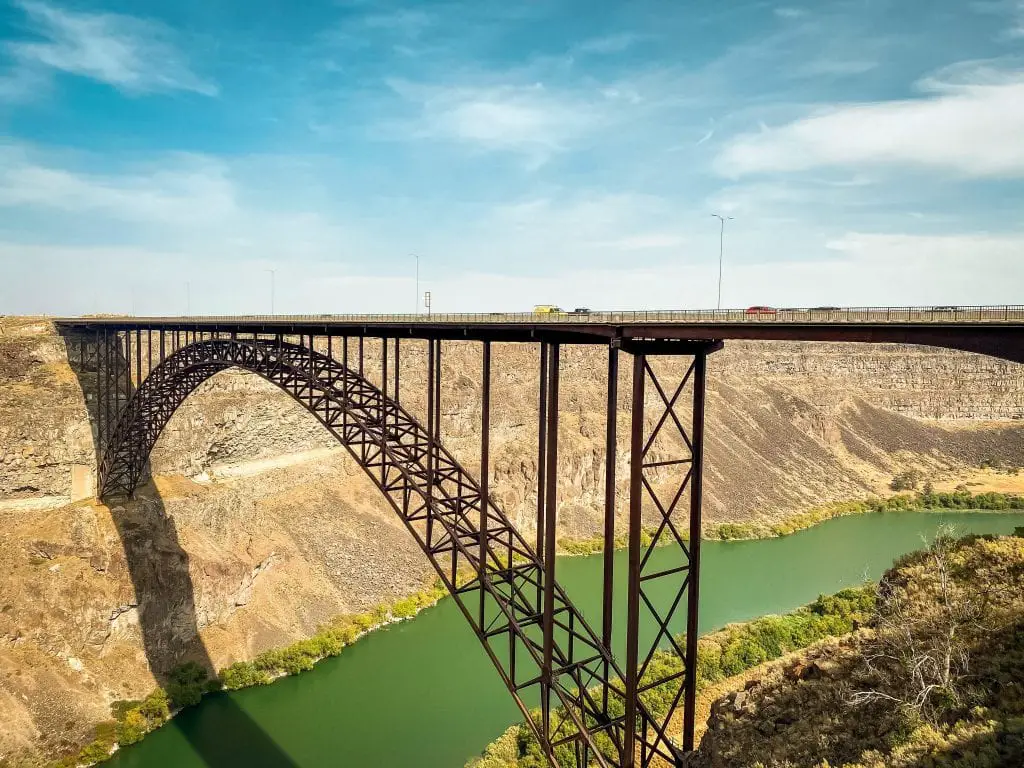
You can walk both under the bridge from one side to the other and across the bridge to the other side of the river.
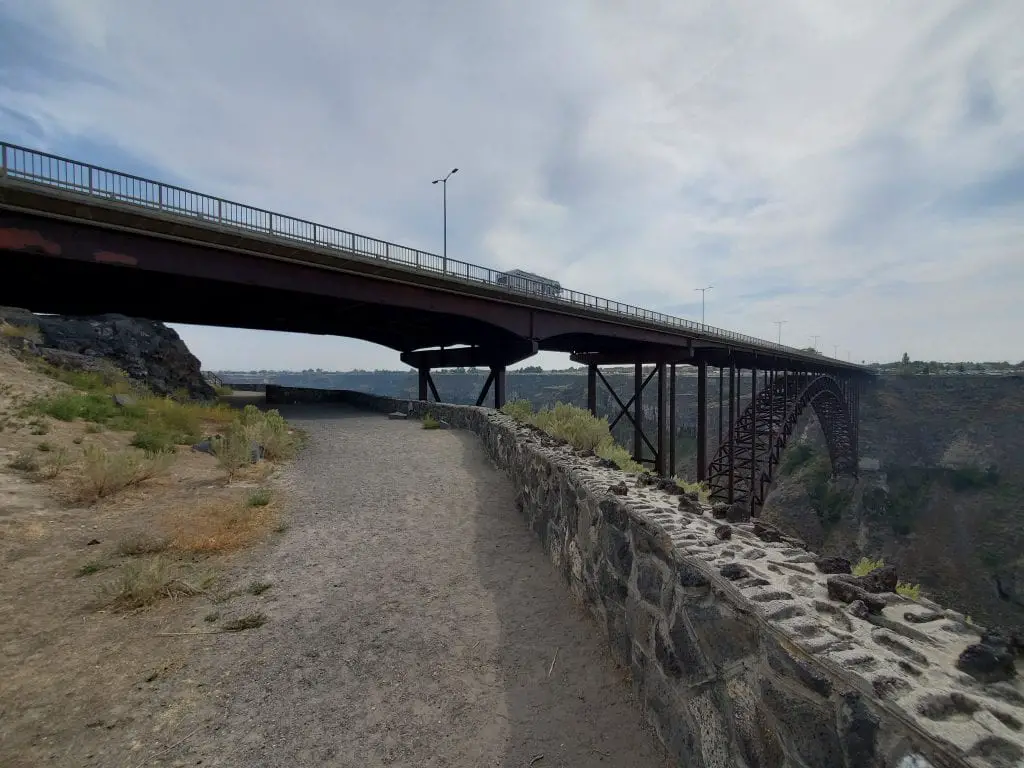
Snake River
The Snake River is one of the major rivers in the Pacific Northwest region, it’s 1,078 miles long. It originates in Wyoming and crosses into Idaho-Oregon border. The river then runs into Washington and flows into the Columbia River and eventually dumps into the Pacific Ocean. It is a very important source of irrigation water for potatoes, sugar beets and other crops grown in the state. It was made famous when daredevil Evel Knievel noticed it from the plane while flying over the state and decided to stage a stunt to jump over the river in 1972. After all the fan fare and spending $30,000 to lease 300 acres to prepare for the jump, Knievel failed to make it to the other side.
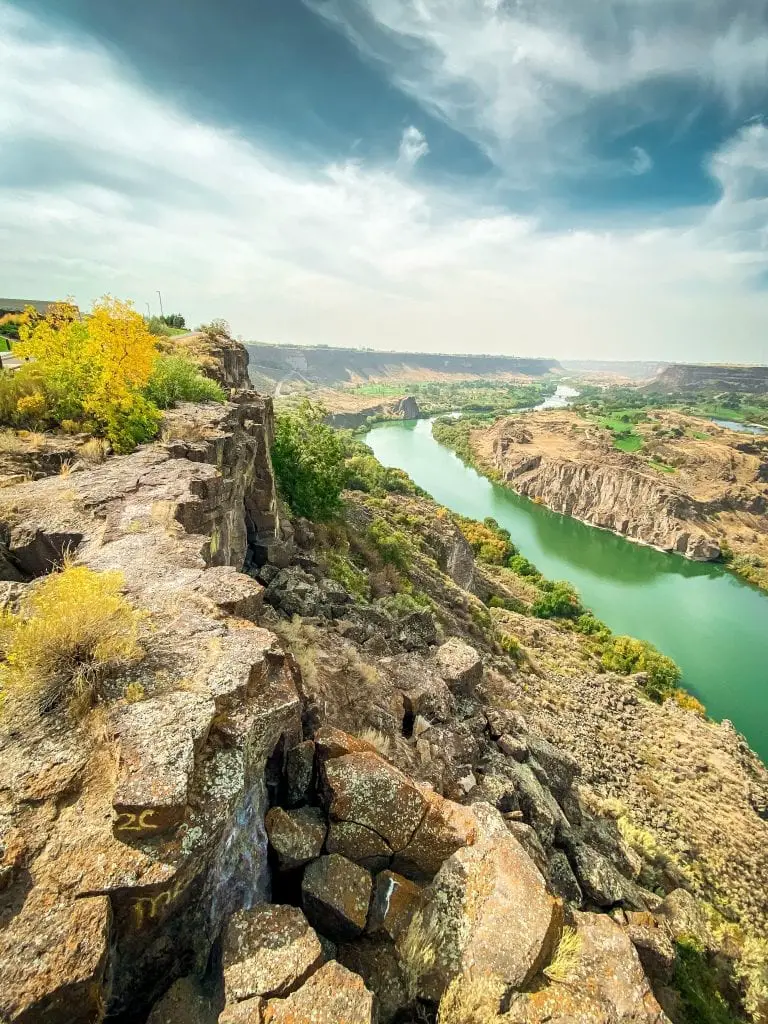
Twin Falls Visitor Center
The best place to start exploring the Snake River area is the twin falls visitor center. It is located just next to the bridge and has a pathway that follows along the rim of the river in both directions. From inside the center you can also check the flow of Shoshone Falls to make sure you visit at the right time.
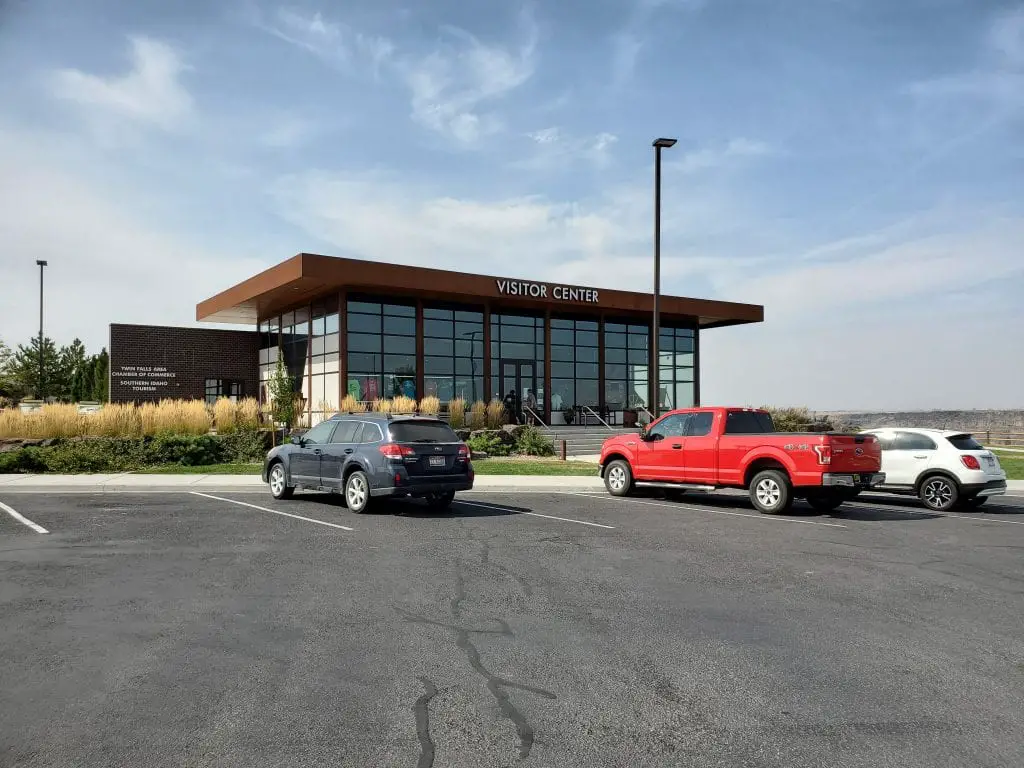
The accessible trail from the visitor center has plenty of overlooks and space to see the river.
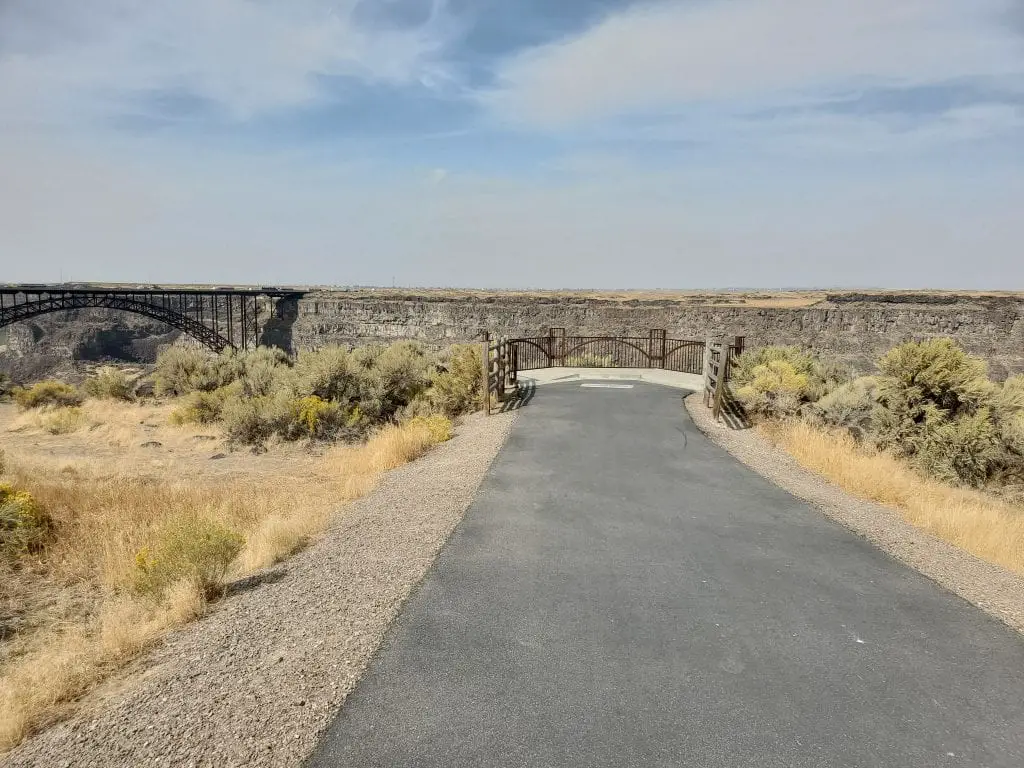
Shoshone Falls
Shoshone Falls Park is located at the edge of Twin Falls. This natural beauty on the edge of the Snake River is known as the Niagara Falls of the west. At 212 feet it’s higher than Niagara Falls. The area has plenty of things to do from hiking, boating, and even swimming. You can kayak the Snake River right up to the falls. The $5 admission fee is charged March 30 through September each year. The best time to enjoy the falls is in the spring. Flow can vary depending on use for irrigation, you can see the live camera feed to the falls at the visitors center. The flow can vary from 20,000 cubic ft per second to just 300 cubic ft per second. You can also see the live feed online. We happened to see it was flowing at a higher rate when we were at the visitors center so we rushed over to see it. It was beautiful and majestic.
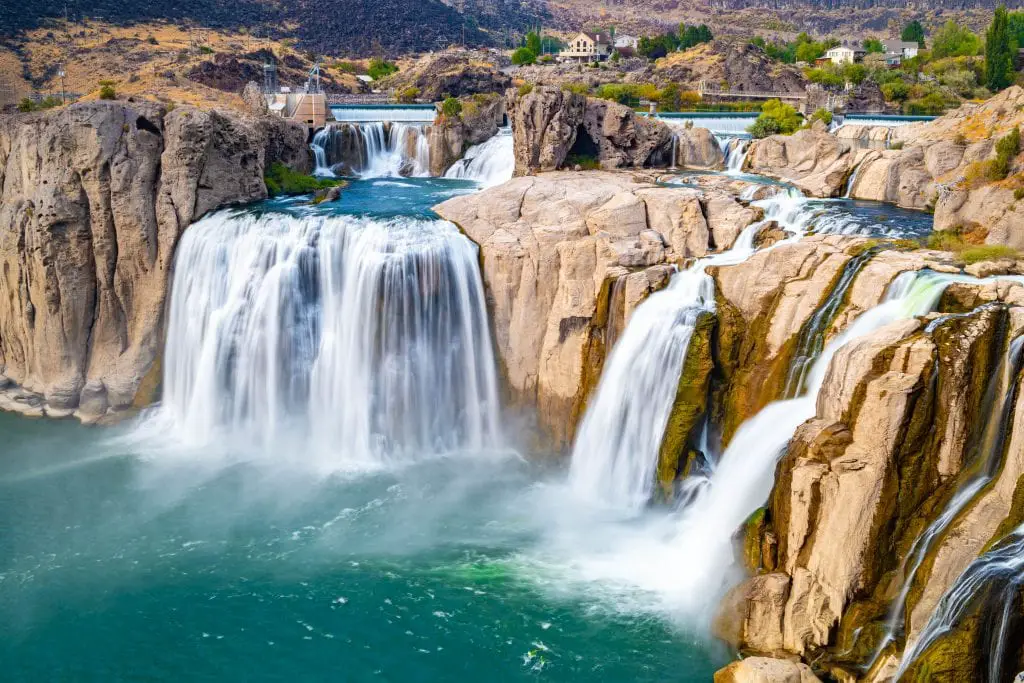
Photographing Shoshone Falls
One of the most pleasant waterfalls to photograph in the west is Shoshone Falls. There is a nice viewing platform where you could setup a tripod or attach a gorilla pod to the railing as I did. Lighting was best for us in late afternoon, as was the water flow. My shutter speed was 1/3 second but you’ll need to adjust that to get silky water depending on the flow. I did need to use a ND Filter to get the shutter speed slow enough to make the water look like that.
Minidoka Internment Camp
The Minidoka National Historic Site commemorates the more than 9,000 Japanese Americans who were imprisoned here during the Second World War. This camp operated from 1942 until 1945. This camp consisted of 36 blocks of housing, each block had 12 barracks divided into 6 separate living areas. They built schools, stores, beauty shops, barber shops, fire stations and even had a baseball league. There has been much debate over what to call the “camps” the terms varied from war relocation center to internment camp to concentration camp and still remains contested today. It was a very eye opening experience, we highly recommend a visit to this area if you get the chance.

We were really unsure what we’d find at the camp. The internet said it would be closed, but that just applied to the visitor center and we were able to walk the entire grounds. There was only one other car there, and it was a really worthwhile stop for us. If you are interested in history, you will love it.
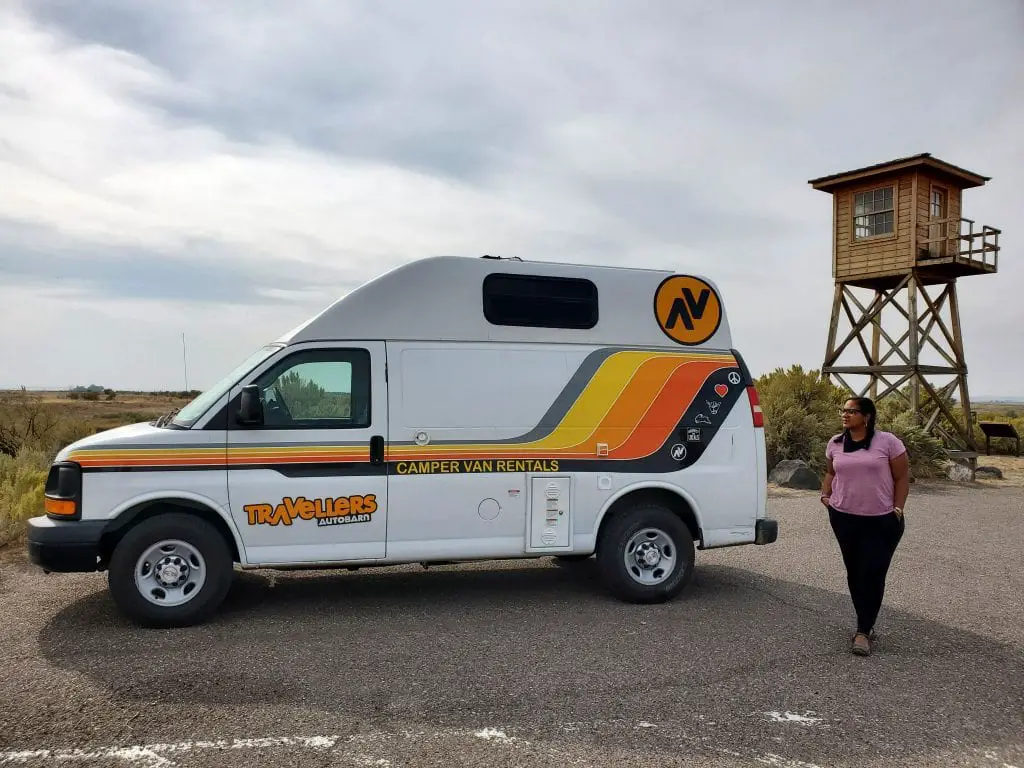
Baseball and softball were such a strong part of the community there and one of the fields still remains. You are able to walk out on to it.

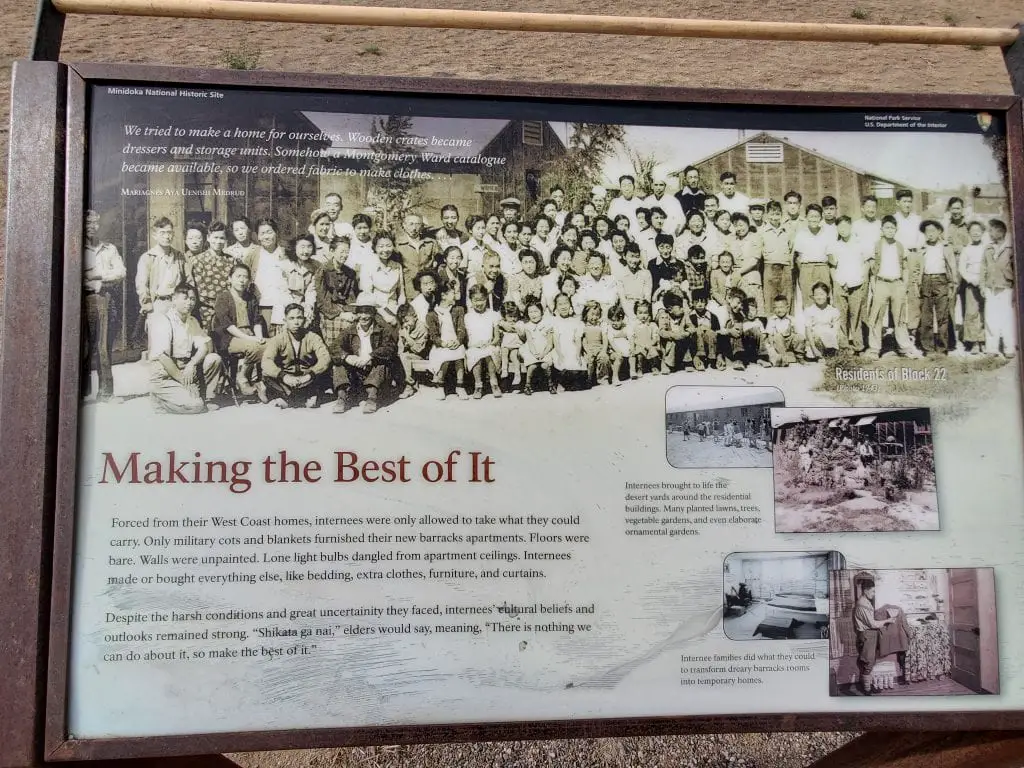
Just Outside The City
Craters of the Moon National Monument
If you are in Twin Falls you will not be too far from Craters of the Moon National Monument near Arco. It is well worth a visit to this volcanic park. It is truly a unique experience like no other on mainland USA. Be sure to check out our full blog on what to do in Craters of the Moon National Monument.
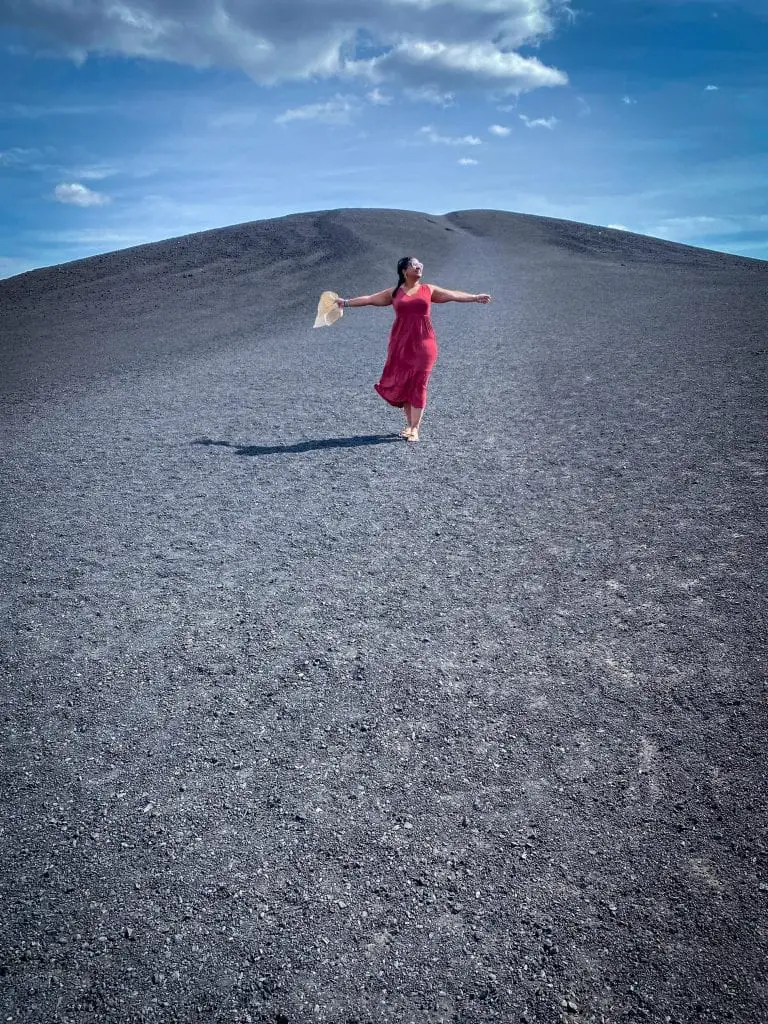
Upper Mesa Falls
Another gem you don’t want to miss in this are is Upper Mesa Falls. If you are leaving the Twin Falls area and heading to Yellowstone National Park, Upper Mesa Falls will be on your way there. This beautiful fall is on Henrys Fork in the Caribou-Targhee National Forest. You will find Lower Mesa Falls upstream about 16 miles in Ashton, Idaho. Upper Mesa Falls is a must see for any waterfall chaser.
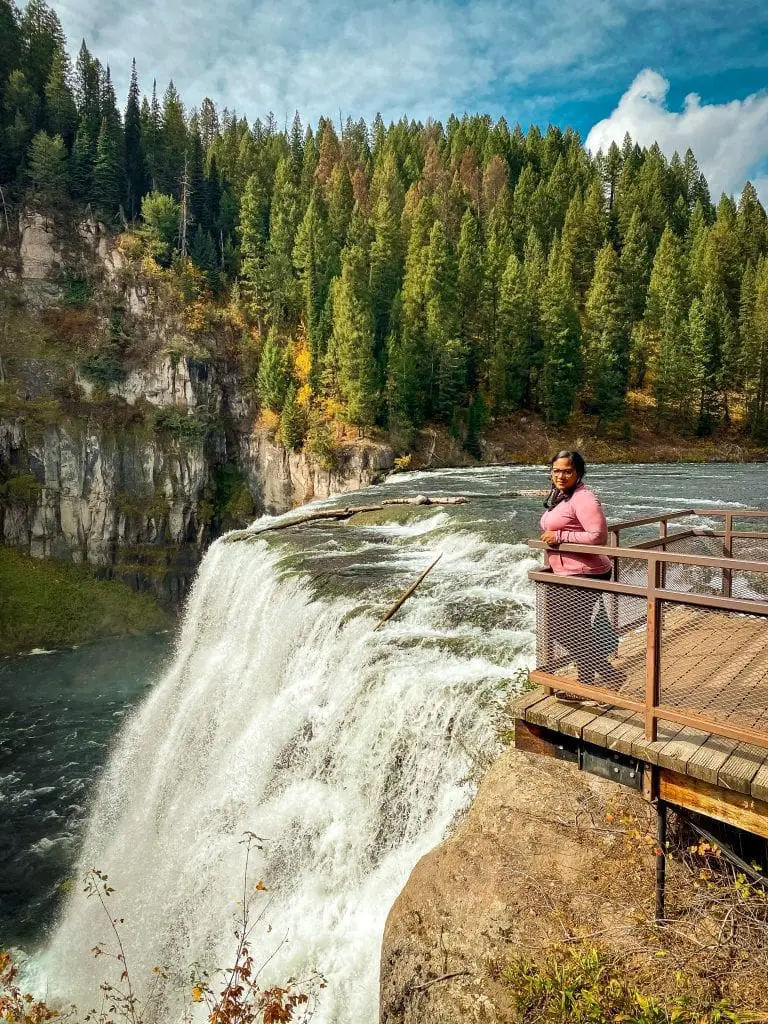
There are several great viewing platforms to see and take pictures of the falls. It is just a short 5 minute hike down some stairs from the parking lot.
Photographing Upper Mesa Falls
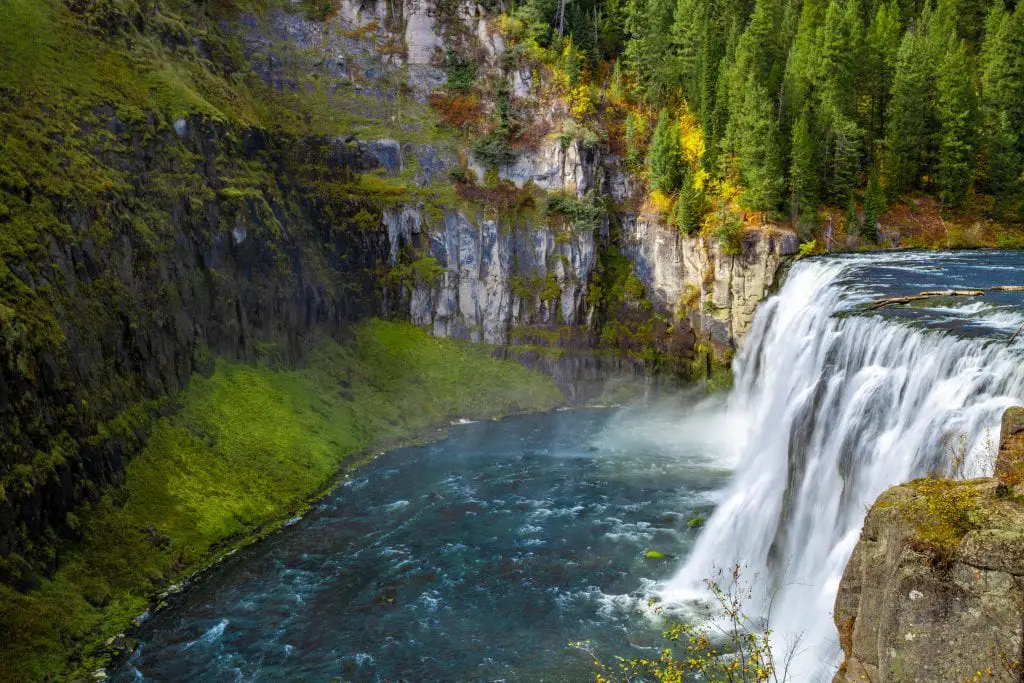
Just like Shoshone Falls there is a platform for a tripod or a railing for a gorilla pod, either will work well. There are several angles and platforms you can choose from depending on how much of the canyon you want in the shot. I didn’t need an ND Filter here as it was pretty dark down in the canyon.



